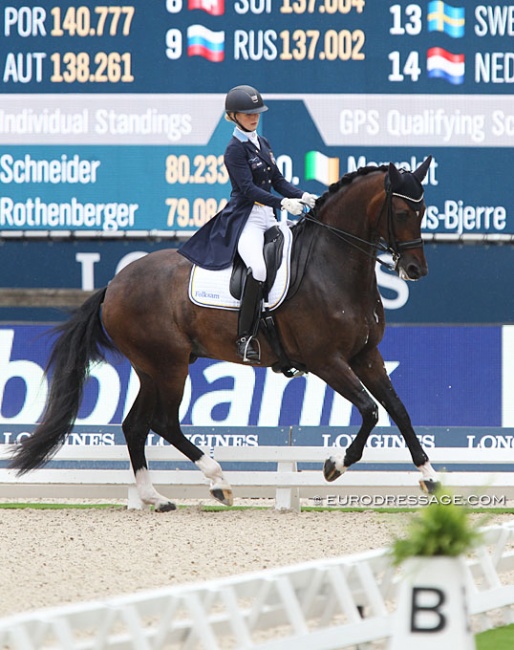
It is said that you can win a dressage test on the short side. I agree. There is no actual mark for the short side. However the short side is where the judge gets a really good look at the frame and paces and the short side is where the rider can really prepare for all the movements. Good preparation will give you the best chance to get the best marks for the movements.
I am including the corners as being a part of the short side. So we ride a corner, a short straight line, and another corner. Then the long side where the movements tend to be placed. In the higher tests we often have a half a short side as we turn down the centre line to do the movements. This half a short side is just as important, and everything discussed about the short side applies to the half a short side in the high level tests.
I think it is very helpful to think of the short side as a movement. When you are practising the test either in your head or at home add it in. For example in the elementary think shoulder in, renvers, short side, extended trot, SHORT SIDE etc. In the medium think half pass, counter canter, flying change, SHORT SIDE, lengthening, etc. Become aware of riding the short side.
A corner is generally six strides. Ride straight, bend, turn in six strides and by the seventh stride you are straight again. The diameter of the corner is approximately two metres smaller than the circles in the test. For example if the test has 20 m circles the corner should be a quarter of an 18 m circle. In the FEI test, the circles are 8 m so the corners are a quarter of a 6 m circle.
You can use the corner to rebalance and collect your horse. Half halt as you arrive at the corner. Press him up with your legs, and be soft. Give the rein as much as you can just by softening your fingers. Allow the corner to do its work to renew self carriage. Encourage him to be in self carriage by giving the rein, by softening the inside hand, as you travel through the corner.
It can be handy to train a young horse to do a little travers in the corner. Training him to allow you to push the quarters in on the corner gives you a better possibility to correct his natural tendency to push the quarters out in the corner, thereby avoiding carrying weight. There may be times in the test that you want to push the quarters in to correct him as he pushes them out. Correct riding on the corner should engage his quarters more.
It can also be handy at times to straighten or slightly counter flex him in the corners to help control the shoulder and to get him on your outside rein correctly. You should try to feel his body in the corners to decide which response you need. Does he need to be more straight or does be need more bend? Is his inside hind leg tracking between the tracks of his front legs in the corners?
Along the short side, the judges get a good look at the horse. They can easily see the correctness of the frame and the engagement. Be aware of this as a rider and show him off on the short side. Is the poll the highest point? Is the nose in front of the vertical? Notice the rhythm and the cadence. Make the rhythm and cadence the best it can be. You can press him forward a little as you come out of the corner and half halt over the centreline, press him out a little again. On the short side check your horses straightness.
When you are training you can practise corners and straight sides. I like to ride a lot of squares. I make them smaller than the arena width so that my horse is not relying on the walls and is between my hands and my legs, not just pressed against the edge of the arena. Be aware of when you actually start the corner, count the strides around the corner, go straight. It can be helpful to sometimes ride a whole circle in the corner. This helps him to wait for your aid and not always presume that he is just doing a corner. It also helps to establish bend. He is less likely to drop his shoulder in when you ride a whole circle in the corners. Make sure that he keeps the same rhythm on the corner and the short side. Encourage him to stay active, don't let him slow down on the corner.
Another exercise is to ride across the arena, like a serpentine with corners. For a young horse you might ride across the arena at B, half halt over X, change rein, corner at E. With an older horse who has better balance you might ride, for example, on the left rein past A, turn left at R, right at V, then turn right at S and left at V.
So both in your training and in your test riding remember that the SHORT SIDE is really like a movement of its own. It is not a pause or a space. Use it to your advantage and you will enjoy higher scores.
Have fun.
Kerry Mack
Grand Prix dressage rider, coach and Mayfield Farm stud principal, Kerry Mack draws on her learning as a qualified psychiatrist to approach training from the cerebral perspective as well as the physical.
This article has appeared previously with Equestrian Life. To see what is in our latest issue, please click here. Check out their free online magazine at https://eqlifemag.com.au/